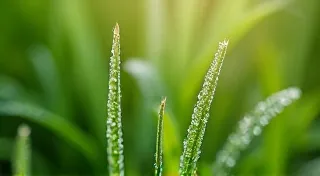Seasonal Weather Patterns: What to Expect and How to Prepare
Your DIY weather station is collecting valuable data, but understanding what that data *means* requires a little knowledge of seasonal weather patterns. Knowing what's typical for each season in your location is crucial for interpreting your readings and even predicting, with some basic skill, what’s coming next. This article will explore common seasonal changes and how they affect your weather station readings.
Understanding the Basics: Why Seasons Change
The tilt of the Earth’s axis is the primary reason we experience seasons. As the Earth orbits the sun, different parts of the planet receive more direct sunlight at different times of the year. This difference in solar intensity drives temperature variations and subsequently, the weather patterns we observe.
Spring (March - May): The Awakening
Spring is a time of transition. After the cold of winter, temperatures gradually rise. You’re likely to see more precipitation as snow melts and spring rains begin. Wind patterns can be quite variable, often shifting dramatically.
What to Expect for Your Weather Station:
- Temperature: A steady increase, but with possible fluctuations due to late-season cold fronts.
- Precipitation: Increased rainfall, potentially with some snowfall in colder regions.
- Wind: Variable and often gusty as the atmosphere stabilizes.
- Humidity: Rising as temperatures increase and snow melts.
Summer (June - August): The Heat
Summer is typically characterized by high temperatures and, depending on your location, periods of intense humidity. Thunderstorms become more common, often bringing heavy rain and strong winds.
What to Expect for Your Weather Station:
- Temperature: Peak temperatures, often with heat waves.
- Precipitation: Localized heavy rainfall from thunderstorms.
- Wind: Generally calmer than spring, but can be punctuated by strong thunderstorm winds.
- Humidity: Often high, especially in coastal areas.
Autumn (September - November): The Cooling
Autumn sees a gradual decrease in temperature as the days get shorter and the sun's energy diminishes. Falling leaves and changing colors characterize the landscape. Precipitation patterns become more variable.
What to Expect for Your Weather Station:
- Temperature: Steady decline, with occasional warm days.
- Precipitation: Variable; can be periods of heavy rain or prolonged dry spells.
- Wind: Becoming more consistent as temperature differences increase.
- Humidity: Decreasing as temperatures drop.
Winter (December - February): The Freeze
Winter brings the coldest temperatures, shorter days, and often, snowfall. High-pressure systems dominate, leading to clear skies and calm conditions, but can also bring prolonged periods of cold.
What to Expect for Your Weather Station:
- Temperature: Lowest temperatures of the year.
- Precipitation: Snowfall in colder regions; rain in milder climates.
- Wind: Often light and variable, but can be strong with passing cold fronts.
- Humidity: Low, especially on clear, cold nights.
Using Your Data for Seasonal Predictions
By tracking your weather station’s readings over time, you can begin to identify patterns specific to your location. Compare this year’s data to previous years to refine your understanding of seasonal changes and anticipate upcoming weather conditions. While your DIY station won’t replace professional forecasts, it provides invaluable hands-on experience in meteorology and a deeper appreciation for the weather around you.
Remember to regularly calibrate your instruments to ensure accuracy throughout the year. Happy monitoring!





